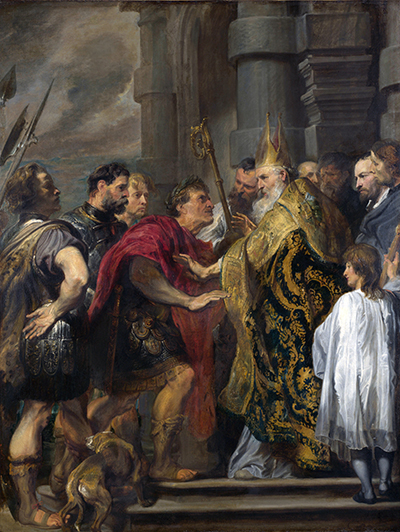The complex painting of Saint Ambrose barring Theodosius from Milan Cathedral by Anthony van Dyck is an adaption of an earlier work by Peter Paul Rubens in which Van Dyck had contributed as a studio assistant
This painting is owned by the National Gallery in London which holds the finest collection of Van Dyck paintings of anywhere in the world. The wealth of the United Kingdom over several centuries meant there was finance available to purchase many of the most famous paintings in the world, even though most were produced in continental Europe.
The display of such prestigious art from the likes of Anthony van Dyck had the additional impact of developing world class artists across the UK, including the likes of JMW Turner and John Constable, which then led onto to the notable artists of the 20th century. Van Dyck's influence in the UK cannot be overplayed, with him eventually becoming Lord Anthony van Dyck. The artist appreciated the success that he received within England though it was his ambition to travel and learn that led to any achievements that he received outside of his native flemish regions.
Saint Ambrose barring Theodosius from Milan Cathedral is believed to have been completed around 1619-1620 which backs up the theory of it being a rework of an earlier painting attributed to Rubens. His direct influence as part of Rubens' studio would finish at around this point and Van Dyck would now stretch his wings by travelling to Italy and England.
The content of this painting is the Roman emperor Theodosius I and his cloest advisors being prevented entrance to Milan Cathedral by archbishop Saint Ambrose. The reason he gives for this decision is the Massacre of Thessalonica. Van Dyck's version takes much of Rubens' but adapts several elements. First of all, Theodosius is clean shaven. Van Dyck also develops the architectural background with greater detail, something that was common in his portraits around this period.




